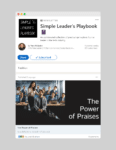One of my first office jobs was temping for NTUC Income’s human resources (HR) department. The bulk of my time was spent on mail merge, printing out hundreds of rejection letters to mail out to unselected job applicants.
Despite how environmentally unfriendly that might seem (think of the trees!), it is a noble gesture since it brings closure to all the interested job seekers who didn’t get a job despite applying.
You would think such replies would probably be more prevalent and swift today given that we have conduits like emails, instant messaging and SMS.
But that isn’t the case. In fact, the situation has worsened.
HR IS OVERWHELMED

Not getting any updates about a job application (or in today’s terms – getting ghosted by the company you applied to) is very common. And you shouldn’t find it surprising.
In 2000, when I was printing out hundreds of rejection letters a day, more than half the applications came in via mail.
That’s right folks. In a not-so-distant past, people printed out their resumes, put them into a manila envelope and mailed these out to potential employers.
With all that effort required, one would tend to be more selective in applying for jobs – and so in the past, there were fewer job applications to process.
But now you can literally “easy apply” or “quick apply” via online job portals like LinkedIn. With a click of a button, you can spam hundreds of employers.
Now multiply that with the number of job seekers in the market. It is overwhelming for any recruiting company, even if you are not as hotly contested for like Google is.
Applications have grown ten times from the days of snail mail but HR departments have not grown by the same multiplier. It is humanly impossible to sort through all those applications and provide a response to each.
Moreover, the HR department’s key performance indicator (KPI) is to fill roles, not to create nice parting shots.
I personally tried to close the loop by calling up candidates – until one experience stopped me. A 1-minute call to provide closure turned into a 30-minute debate-and-counselling session.
SORRY, THERE’S SOMEONE BETTER


Another major reason why companies might ghost you is that they already have someone else in mind for the role, or at least the mould of it, and you are just not it.
I have seen numerous hiring managers who have requirements only Superman could fit.
Beyond that, you also have cases such as the managing partner of one large audit firm who turns away anyone from Anglo-Chinese School (he says it’s because he comes from Hwa Chong).
Or the Chinese HR director that won’t entertain anybody born in the year of tiger, dragon and rooster (because of their horoscope conflicts with the owner’s).
To the boss who only accepts graduates from local universities.
With so many different factors at play, it can be difficult for job seekers not to be ghosted. But if you play your cards right, there are ways to minimise them.
1. MAKE SURE YOU GET PAST THE ROBOT APPLICATION TRACKING SYSTEM


According to a study by software company Capterra in 2015, 75 per cent of recruiters and talent managers use some form of recruiting or applicant tracking software (ATS).
They help force rank applicants so that recruiters only need to go through the top 10 per cent.
So how do you make sure you rank high?
Like why certain pages rank on page one of Google and others on page 10, keyword optimisation in your CV is crucial.
You can do a manual count of hard skills and soft skills keywords within the target job description. Which can be very time-consuming since every single job you are applying for probably carry a different set and mix of keywords.
You could use a quicker hack – a CV keywords optimisation platform such as JobScan.
The keywords from the job description will be matched against what you have in your CV. You will be alerted to missing ones and you enter them into your CV, ensuring that your CV could rank high when it lands onto the ATS.
2. GET REFERRED

According to Bersin by Deloitte, their study in 2017 of 11 common sourcing channels found that employee referrals are the number one source of high-quality candidates.
Because no one will ever refer their crazy neighbour to their company. Even if the neighbour is your BFF.
Moreover, many companies have incentive programmes that only pays if your referee hits their one-year mark. That also means if you are referred, you might naturally be associated with a “high-quality” label.
Of course, this would be easy if you already know someone in your target company. If not, you can start today with LinkedIn and connect with people you don’t know.
Besides ensuring that you have a complete LinkedIn profile, your approach to current employees must be strategic. Don’t go guns-blazing and connect with everyone you can find to ask for referrals.
Instead, do some research to find out who the hiring manager might be. If that isn’t available, look for peers. And then you want to reach out to them and ask for …. career advice.
Everybody likes to be regarded as an expert. If you stroke their ego enough, they might be more than happy to grant you 20 minutes of their time for coffee (that you offer to buy) or at least a phone call.
Based on the experience of my previous career coaching clients, the success rate is about 60 per cent. At least half would entertain a coffee.
Just make sure you follow through with what you pitched – that you are only getting career advice and not begging for a referral once you hand them their coffee.
If you are good enough, they may naturally refer.
If not, given what they know of you, they could at least point you in the right direction to gain more XP before you try again.
Use JobSeer to easily find out if you have connections in your target company.
3. BYPASS THE HR DEPARTMENT

It is common for hiring managers to override recommendations made.
They just need to give fair warning, hiring managers to get their way and everyone moves on.
Even if they are not, a single recruiter of a huge company would probably be managing 40 to 50 job requisitions at any one time.
Going straight to the hiring manager might be akin to an express ticket for your favourite ride at Universal Studios.
But how do you even begin?
It isn’t hard to find someone’s business email address. The tough part is to find them at scale. There are plenty of email finding tools in the market.
And once I have an email address, I would feed them into an automated email marketing tool such as reply.io.
It allows me to create an email drip that would continue to check in if no replies are detected. This is massive because most recipients do not have email OCD as I do. Chances are they have 5,000+ emails – numbers that would make me break into a cold sweat.
So the best way to ensure your email gets read is to send multiple check-ins.
My personal favourite is the final email (usually the fourth) to tell them I am going to stop as I don’t want to clog up their inbox. This usually gets a 40 per cent response rate because it makes the recipient feels bad.
Another way to scale your outreach is to use LoopCV, a job search automation platform
DO SOMETHING DIFFERENT

As a single job seeker, there are many things you can do to avoid ghosting. If you think you are indeed a good fit, what’s the harm in pursuing that opportunity?
And why not try unconventional approaches to circumvent the problem?
Like what Einstein said before, doing the same thing over and over again but expecting different results is insanity.




